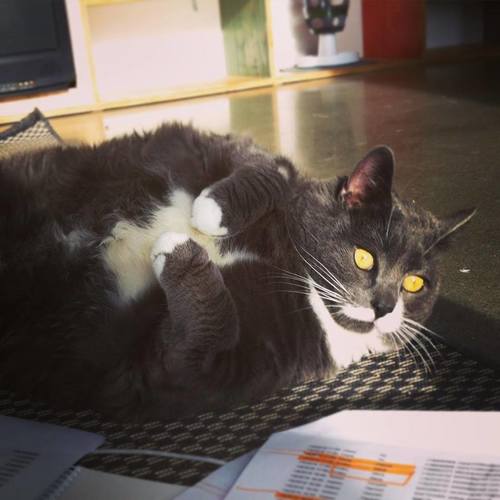A few years back, the Smithsonian released a study which claimed that cats (both feral and domestic) kill between 1.4 and 3.7 billion birds, and between 6.9 and 20.7 billion mammals a year. These shocking statistics were passed along by the media without question, and have been used to affect public policy, including regulations put into place that affect feral cat populations.
First of all, one of the main contributors to the study is a woman who was recently convicted of attempted animal cruelty, for dumping rat poison on bowls of cat food that her neighbors left out for feral cats. Nico Dauphine was forced to resign from the Smithsonian after the incident, but she continues to remain a vocal critic of TNR (Trap Neuter Release) programs for feral cat populations.
Second of all, the overall estimates of the number of birds in North America is around 4.9 billion. The study adds that collisions with windows and towers kills 21% of birds annually. Take that in conjunction with the numbers the study gives for cat kills, and according to this study, 100% of the population of North American birds gets killed by cats or windows every year.
Hmm, really?
The study bases its estimates on the number of feral cats in the United States, which is not a known number. With some hand-waving, they arrived at a figure of 30-80 million feral cats. Even given that we don't know how many feral cats are out there, that's ridiculously high.
The study also fails to acknowledge the fact that predation is a known and valid pressure on a population. Remove the main predator from an ecosystem, and another predator will arise to take its place. In this case, we have removed almost every predator from the environment, and replaced it with cats. That's bad news for those original predators, but the overall level of predation remains constant.
Without any predation, a population runs rampant and becomes unhealthy. Predators take the very old, the very young, the sick, the weak, and the injured. It's nature's design.
Finally, cats, being creatures that live with humans, tend to live in urban and suburban areas. Most cat kills are "Least Concern" species like sparrows and robins. There are very few cats stalking high-risk wild birds in remote areas.
Other studies, studies which have actually observed feral cats for hundreds of hours, report that feral cats actually only kill 24-50 birds per year. Furthermore, feral cats which are fed (like those which are involved in a TNR program) basically quit hunting altogether.









